Business
Stellantis Reports 7% Growth in Q3 2023 Net Revenues, Driven by Continued Strength in Shipments Year-Over-Year
Published
1 year agoon
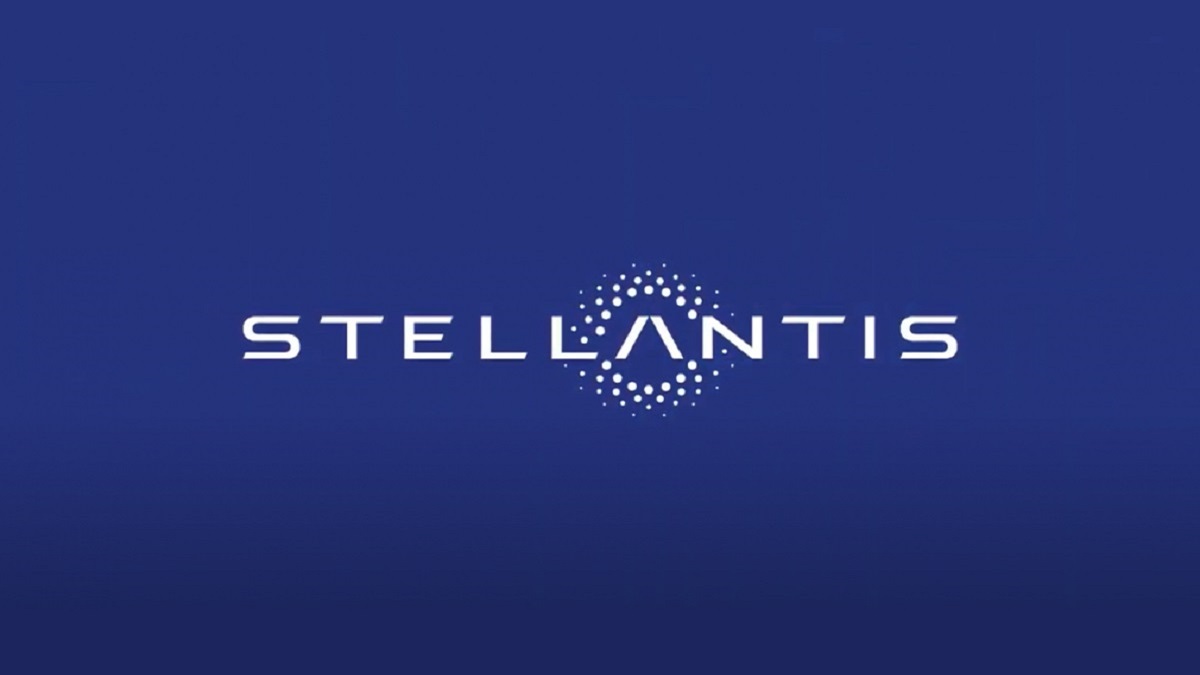
In an industry still affected by unprecedented disruptions and transformations, Stellantis and its dealer network in Europe have strengthened their partnership to improve customer experience and streamline the overall customer journey
AMSTERDAM, Netherlands, November 1, 2023/APO Group/ —
Net revenues of €45.1 billion, up 7% compared to Q3 2022, mainly reflecting improved volume and consistent pricing, partially offset by foreign exchange impacts; Consolidated shipments(1) of 1,427 thousand units, up 11% versus Q3 2022, with Enlarged Europe, Middle East & Africa, North America and South America reporting year-over-year improvements; Total new vehicle inventory of 1,387 thousand units at September 30, 2023. Company inventory of 388 thousand units, up 158 thousand units from December 31, 2022 reflecting a return to more normal levels after a multi-year period of materially-constrained supplies; Tentative agreement reached with both UAW and Unifor. Work stoppages negatively impacted Net revenues by approximately €3 billion, compared to planned production, through October; Global BEV sales up 37% versus Q3 2022 mainly driven by the Jeep® Avenger and growing commercial BEV vehicles sales led by the Citroën ë-Berlingo; The Company repurchased €0.5 billion in shares during Q3 2023. During the nine months ended September 30, 2023, €1.2 billion in shares were repurchased. The Company expects to complete the announced €1.5 billion 2023 Share Buyback Program during Q4 2023. “In the first half of this year, Stellantis (www.Stellantis.com) emerged as the industry leader for AOI, AOI margin, and Industrial Free Cash Flows among its comparable peers. Today, we are focused on maintaining our momentum by delivering industry-leading profitability and cash flows, addressing critical near-term industry challenges, and continuing our electrification and technology transformation. This growth is propelling the execution of our Dare Forward 2030 strategy”: Natalie Knight, CFO.
Stellantis N.V. continued to build momentum in Q3 2023, delivering a 7% year-over-year increase of Net revenues driven by continued strength in shipments. The Company’s “Third Engine”(5) achieved 25% revenue growth year-over-year. Global BEV sales were up 37% versus third quarter 2022, led by the following vehicles: Jeep® Avenger, Citroën Ami, Peugeot E-208, Fiat New 500e, and Citroën ë-Berlingo. Key activities executed to achieve the Dare Forward 2030 strategic plan include:
Care: In an industry still affected by unprecedented disruptions and transformations, Stellantis and its dealer network in Europe have strengthened their partnership to improve customer experience and streamline the overall customer journey. With the signing of over 8,000 sales and 25,000 aftersales contracts across 10 strategic European countries, it is clear that Stellantis and its business partners share the same goals when it comes to simplification, multi-brand approach, customer centricity, and quality assurance. Austria, Belgium, Luxembourg, and Netherlands have already adopted the new contracts, with the rest of Europe to begin adopting the new model starting in 2024.
Tech: Peugeot revealed the first application of STLA Medium – the first of Stellantis’ four global BEV-by-design platforms – with the new E-3008, offering a best-in-class range of up to 700 km, charging time, performance, efficiency, and driving pleasure. Fiat returned to the B-segment, leading the way for sustainable urban mobility, with the new 600e, which boasts state-of-the-art safety features and an electric range of more than 400km (WLTP(6) combined cycle) and more than 600 km (WLTP(6) urban cycle) in the city. Fiat also unveiled the new Topolino micro-mobility offer with a 75km range and a safe top speed of 45 km/h. The Company also announced the start of all-electric van production at Ellesmere Port – the UK’s first EV-only volume manufacturing plant – and the first Stellantis plant globally dedicated to electric vehicles.
Coming to the market soon is the all-electric Citroën ë-C3. The first affordable European electric car, the ë-C3 delivers best-in-class comfort, and easy electric life thanks to a 44kWh battery pack providing up to 320km (199 miles) WLTP(6) driving range, at fair and net prices in many European markets, starting at €23,300.
Stellantis celebrated the opening of its state-of-the-art Battery Technology Center at the Mirafiori complex in Turin, Italy. The center enhances the Company’s capabilities to design, develop and test battery packs, modules, high-voltage cells, and software to power upcoming Stellantis brand vehicles.
The Company continued to strengthen its global electrification ecosystem and support its carbon neutrality ambitions: (i) concluding testing with Aramco on the compatibility of 24 engine families to use advanced drop-in eFuels, which will lower CO2 emissions of a potential 28 million Stellantis vehicles currently on the road; (ii) unveiling with Saft the Intelligent Battery Integrated System, which the project team intends to make commercially available on Stellantis vehicles before the end of this decade; (iii) announcing plans for a sixth gigafactory globally to support its bold electrification plan of securing approximately 400 GWh of battery capacity; it will be the second facility to be built in the U.S. with Samsung SDI; (iv) investing in Controlled Thermal Resources Holdings Inc.’s Hell’s Kitchen project to produce up to 300,000 metric tons of lithium carbonate equivalent each year; and (v) completing its 33.3% purchase of Symbio, a leader in zero-emission hydrogen mobility to help secure Stellantis’ leadership position in hydrogen-powered vehicles.
Value: To accelerate the transition to electric vehicles in North America, Stellantis and six major global automakers will create an unprecedented charging network installing at least 30,000 high-powered charge points.
Stellantis is also implementing a multifaceted strategy designed to manage and secure the long-term supply of vital microchips, delivering the objectives laid out in Dare Forward 2030. Stellantis’ strategy combines agreements with chip makers for critical semiconductors, purchase of mission-critical parts, and full visibility of future chip needs.
The Company repurchased €0.5 billion in shares during Q3 2023. During the nine months ended September 30, 2023, €1.2 billion in shares were repurchased. The Company expects to complete the announced €1.5 billion 2023 Share Buyback Program during Q4 2023.
In October 2023, the Company announced its plans to acquire approximately 20% of Leapmotor for approximately €1.5 billion and to form Leapmotor International, a 51/49 Stellantis-led joint venture with exclusive rights for the export and sale, as well as manufacturing, of Leapmotor products outside Greater China.
In October 2023, the Company introduced Pro One as the enhanced strategic offensive of its commercial vehicles business to achieve global leadership, encompassing the professional offerings of six iconic brands of Stellantis – Citroën, FIAT Professional, Opel, Peugeot, Ram and Vauxhall, and to support achievement of the Dare Forward 2030 strategic plan targets.
On October 31, 2023 at 2:00 p.m. CET / 9:00 a.m. EDT, a live audio webcast and conference call will be held to present Stellantis’ Third Quarter 2023 Shipments and Revenues. The audio webcast and recorded replay will be accessible under the Investors section of the Stellantis corporate website at www.Stellantis.com. The presentation material is expected to be posted under the Investors section of the Stellantis corporate website at approximately 8:00 a.m. CET / 3:00 a.m. EDT on October 31, 2023.
Upcoming events:
- Full Year 2023 Results – February 15, 2024
- Investor Day 2024, Auburn Hills, Michigan, USA – June 13, 2024
| Q3 2023 | Q3 2022 | Change | FY 2023 GUIDANCE – CONFIRMEDAdjusted Operating Income Margin(2) Double-DigitIndustrial Free Cash Flows(3) Positive€1.5 billion Share Buyback Program On-Track2023 INDUSTRY OUTLOOK(4)*North America +8% (from 5%)Enlarged Europe +10% (from 7%)Middle East & Africa +10% (from 7%)South America Stable (from 3%)India & Asia Pacific +5% (unchanged)China +2% (unchanged)*2023 Industry Outlook changed for NA, EE, MEA and SA compared to outlook provided on Jul 26 ’23 | ||||||
| Combined shipments (000 units) | 1,478 | 1,334 | +11% | ||||||
| Consolidated shipments (000 units) | 1,427 | 1,281 | +11% | ||||||
| Net revenues (€ billion) | 45.1 | 42.1 | +7% | ||||||
| YTD 2023 | YTD 2022 | Change | |||||||
| Combined shipments (000 units) | 4,805 | 4,367 | +10% | ||||||
| Consolidated shipments (000 units) | 4,629 | 4,215 | +10% | ||||||
| Net revenues (€ billion) | 143.5 | 130.1 | +10% | ||||||
____________________________________________________________________________________________________________________________________
All reported data is unaudited. Reference should be made to the section “Safe Harbor Statement” included elsewhere within this document.
Segment Performance
| NORTH AMERICA | ||||||||||||
| Q3 2023 | Q3 2022 | Change | Shipments up 7%, led by Chrysler (in particular Pacifica PHEV) which more than doubled y-o-y; Dodge and Ram also improved; Jeep shipments down due to the discontinued current generation Cherokee and scheduled downtime of the Compass, partially offset by Grand Cherokee which nearly doubledNet revenues up 2%, primarily due to higher volumes, positive net pricing and positive mix, mostly offset by unfavorable FX translation effects | YTD 2023 | YTD 2022 | |||||||
| Shipments (000s) | 470 | 441 | +29 | 1,493 | 1,400 | |||||||
| Net revenues (€ million) | 21,523 | 21,071 | +452 | 67,439 | 63,514 | |||||||
| ENLARGED EUROPE | ||||||||||||
| Q3 2023 | Q3 2022 | Change | Shipments up 11%, driven by increased shipments of Opel/Vauxhall (in particular Astra), Fiat Professional (led by Ducato) and Peugeot (led by 208), as well as increased demand for BEVs, led by Jeep AvengerNet revenues up 5%, mainly due to increased volumes and stable net pricing | YTD 2023 | YTD 2022 | |||||||
| Shipments (000s) | 599 | 538 | +61 | 2,077 | 1,900 | |||||||
| Net revenues (€ million) | 14,124 | 13,486 | +638 | 48,985 | 44,805 | |||||||
| MIDDLE EAST & AFRICA | ||||||||||||
| Q3 2023 | Q3 2022 | Change | Consolidated shipments up 102%, led by robust growth in Fiat shipments; Opel, Peugeot and Citroën models also grew significantly, partially offset by a decrease in Jeep brand shipmentsNet revenues up 128%, primarily due to increased volumes and positive net pricing, partially offset by negative FX translation effects, mainly from Turkish lira | YTD 2023 | YTD 2022 | |||||||
| Combined shipments (000s)(1) | 139 | 87 | +52 | 440 | 286 | |||||||
| Consolidated shipments (000s)(1) | 105 | 52 | +53 | 313 | 190 | |||||||
| Net revenues (€ million) | 3,021 | 1,324 | +1,697 | 7,719 | 4,363 | |||||||
| SOUTH AMERICA | ||||||||||||
| Q3 2023 | Q3 2022 | Change | Shipments up 7%, due to higher Fiat volumes (led by Fastback), Fiat Professional, Peugeot and Ram shipmentsNet revenues up 8%, mainly due to increased volumes and favorable net pricing, partially offset by negative FX translation effects, mostly Argentinian peso | YTD 2023 | YTD 2022 | |||||||
| Shipments (000s) | 227 | 213 | +14 | 647 | 616 | |||||||
| Net revenues (€ million) | 4,285 | 3,965 | +320 | 11,848 | 11,198 | |||||||
| CHINA AND INDIA & ASIA PACIFIC | ||||||||||||
| Q3 2023 | Q3 2022 | Change | Consolidated shipments down 33%, due to decreased shipments of Jeep and Peugeot; mitigated by increased Alfa Romeo (due to all-new Tonale)Net revenues down 38%, mainly due to decreased volumes and negative FX translation effects | YTD 2023 | YTD 2022 | |||||||
| Combined shipments (000s)(1) | 37 | 48 | (11) | 127 | 148 | |||||||
| Consolidated shipments (000s)(1) | 20 | 30 | (10) | 78 | 92 | |||||||
| Net revenues (€ million) | 705 | 1,138 | (433) | 2,691 | 3,290 | |||||||
| MASERATI | ||||||||||||
| Q3 2023 | Q3 2022 | Change | Shipments down 20%, due to lower volumes in China; Levante and Ghibli shipments down, partially offset by higher Grecale volumesNet revenues down 21%, primarily due to decreased volumes and unfavorable FX translation effects | YTD 2023 | YTD 2022 | |||||||
| Shipments (000s) | 5.3 | 6.6 | (1.3) | 20.6 | 16.8 | |||||||
| Net revenues (€ million) | 496 | 630 | (134) | 1,805 | 1,571 | |||||||
Reconciliations
Net revenues from external customers to Net revenues
| Q3 2023 | (€ million) | NORTH AMERICA | ENLARGED EUROPE | MIDDLE EAST & AFRICA | SOUTH AMERICA | CHINA AND INDIA & ASIA PACIFIC | MASERATI | OTHER(*) | STELLANTIS | ||||||||
| Net revenues from external customers | 21,522 | 14,077 | 3,022 | 4,320 | 705 | 495 | 995 | 45,136 | |||||||||
| Net revenues from transactions with other segments | 1 | 47 | (1) | (35) | — | 1 | (13) | — | |||||||||
| Net revenues | 21,523 | 14,124 | 3,021 | 4,285 | 705 | 496 | 982 | 45,136 | |||||||||
___________________________________________________________________________________________________________________
(*) Other activities, unallocated items and eliminations
| Q3 2022 | (€ million) | NORTH AMERICA | ENLARGED EUROPE | MIDDLE EAST & AFRICA | SOUTH AMERICA | CHINA AND INDIA & ASIA PACIFIC | MASERATI | OTHER(*) | STELLANTIS | ||||||||
| Net revenues from external customers | 21,070 | 13,467 | 1,324 | 3,978 | 1,136 | 631 | 495 | 42,101 | |||||||||
| Net revenues from transactions with other segments | 1 | 19 | — | (13) | 2 | (1) | (8) | — | |||||||||
| Net revenues | 21,071 | 13,486 | 1,324 | 3,965 | 1,138 | 630 | 487 | 42,101 | |||||||||
___________________________________________________________________________________________________________________
(*) Other activities, unallocated items and eliminations
| YTD 2023 | (€ million) | NORTH AMERICA | ENLARGED EUROPE | MIDDLE EAST & AFRICA | SOUTH AMERICA | CHINA AND INDIA & ASIA PACIFIC | MASERATI | OTHER(*) | STELLANTIS | ||||||||
| Net revenues from external customers | 67,438 | 48,888 | 7,720 | 11,929 | 2,690 | 1,805 | 3,034 | 143,504 | |||||||||
| Net revenues from transactions with other segments | 1 | 97 | (1) | (81) | 1 | — | (17) | — | |||||||||
| Net revenues | 67,439 | 48,985 | 7,719 | 11,848 | 2,691 | 1,805 | 3,017 | 143,504 | |||||||||
___________________________________________________________________________________________________________________
(*) Other activities, unallocated items and eliminations
| YTD 2022 | (€ million) | NORTH AMERICA | ENLARGED EUROPE | MIDDLE EAST & AFRICA | SOUTH AMERICA | CHINA AND INDIA & ASIA PACIFIC | MASERATI | OTHER(*) | STELLANTIS | ||||||||
| Net revenues from external customers | 63,512 | 44,742 | 4,363 | 11,211 | 3,286 | 1,574 | 1,412 | 130,100 | |||||||||
| Net revenues from transactions with other segments | 2 | 63 | — | (13) | 4 | (3) | (53) | — | |||||||||
| Net revenues | 63,514 | 44,805 | 4,363 | 11,198 | 3,290 | 1,571 | 1,359 | 130,100 | |||||||||
______________________________________________________________________________________
(*) Other activities, unallocated items and eliminations
Rankings, market share and other industry information are derived from third-party industry sources (e.g. Agence Nationale des Titres Sécurisés (ANTS), Associação Nacional dos Fabricantes de Veículos Automotores (ANFAVEA), Ministry of Infrastructure and Sustainable Mobility (MIMS), Ward’s Automotive) and internal information unless otherwise stated.
For purposes of this document, and unless otherwise stated industry and market share information are for passenger cars (PC) plus light commercial vehicles (LCV), except as noted below:
- Middle East & Africa exclude Iran, Sudan and Syria;
- South America excludes Cuba;
- India & Asia Pacific reflects aggregate for major markets where Stellantis competes (Japan (PC), India (PC), South Korea (PC + Pickups), Australia, New Zealand and South East Asia);
- China represents PC only; and
- Maserati reflects aggregate for 17 major markets where Maserati competes and is derived from S&P Global data, Maserati competitive segment and internal information.
Prior period figures have been updated to reflect current information provided by third-party industry sources.
Commercial Vehicles include vans, light and heavy-duty trucks and passenger vehicles registered or converted for commercial use.
EU30 = EU 27 (excluding Malta), Iceland, Norway, Switzerland and UK.
Low emission vehicles (LEV) = battery electric (BEV), plug-in hybrid (PHEV) and fuel cell electric (FCEV) vehicles.
All Stellantis reported BEV and LEV sales include Citroën Ami and Opel Rocks-e; in countries where these vehicles are classified as quadricycles, they are excluded from Stellantis reported combined sales, industry sales and market share figures.
Safe Harbor Statement
This document, in particular references to “FY 2023 Guidance”, contains forward looking statements. In particular, statements regarding future financial performance and the Company’s expectations as to the achievement of certain targeted metrics, including revenues, industrial free cash flows, vehicle shipments, capital investments, research and development costs and other expenses at any future date or for any future period are forward-looking statements. These statements may include terms such as “may”, “will”, “expect”, “could”, “should”, “intend”, “estimate”, “anticipate”, “believe”, “remain”, “on track”, “design”, “target”, “objective”, “goal”, “forecast”, “projection”, “outlook”, “prospects”, “plan”, or similar terms. Forward-looking statements are not guarantees of future performance. Rather, they are based on the Company’s current state of knowledge, future expectations and projections about future events and are by their nature, subject to inherent risks and uncertainties. They relate to events and depend on circumstances that may or may not occur or exist in the future and, as such, undue reliance should not be placed on them.
Actual results may differ materially from those expressed in forward-looking statements as a result of a variety of factors, including: the Company’s ability to launch new products successfully and to maintain vehicle shipment volumes; changes in the global financial markets, general economic environment and changes in demand for automotive products, which is subject to cyclicality; the Company’s ability to realize the anticipated benefits of the merger; the Company’s ability to offer innovative, attractive products and to develop, manufacture and sell vehicles with advanced features including enhanced electrification, connectivity and autonomous-driving characteristics; the continued impact of unfilled semiconductor orders; the Company’s ability to successfully manage the industry-wide transition from internal combustion engines to full electrification; the Company’s ability to produce or procure electric batteries with competitive performance, cost and at required volumes; a significant malfunction, disruption or security breach compromising information technology systems or the electronic control systems contained in the Company’s vehicles; exchange rate fluctuations, interest rate changes, credit risk and other market risks; increases in costs, disruptions of supply or shortages of raw materials, parts, components and systems used in the Company’s vehicles; changes in local economic and political conditions; changes in trade policy, the imposition of global and regional tariffs or tariffs targeted to the automotive industry, the enactment of tax reforms or other changes in tax laws and regulations; the level of government economic incentives available to support the adoption of battery electric vehicles; various types of claims, lawsuits, governmental investigations and other contingencies, including product liability and warranty claims and environmental claims, investigations and lawsuits; material operating expenditures in relation to compliance with environmental, health and safety regulations; the level of competition in the automotive industry, which may increase due to consolidation and new entrants; the Company’s ability to attract and retain experienced management and employees; exposure to shortfalls in the funding of the Company’s defined benefit pension plans; the Company’s ability to provide or arrange for access to adequate financing for dealers and retail customers and associated risks related to the establishment and operations of financial services companies; the Company’s ability to access funding to execute its business plan; the Company’s ability to realize anticipated benefits from joint venture arrangements; disruptions arising from political, social and economic instability; risks associated with the Company’s relationships with employees, dealers and suppliers; the Company’s ability to maintain effective internal controls over financial reporting; developments in labor and industrial relations and developments in applicable labor laws; earthquakes or other disasters; and other risks and uncertainties.
Any forward-looking statements contained in this document speak only as of the date of this document and the Company disclaims any obligation to update or revise publicly forward-looking statements. Further information concerning the Company and its businesses, including factors that could materially affect the Company’s financial results, is included in the Company’s reports and filings with the U.S. Securities and Exchange Commission and AFM.
_________________________________________
Notes:
(1) Combined shipments include shipments by Company’s consolidated subsidiaries and unconsolidated joint ventures, whereas Consolidated shipments only include shipments by Company’s consolidated subsidiaries. Figures by segments may not add up due to rounding.
(2) Adjusted operating income/(loss) excludes from Net profit/(loss) adjustments comprising restructuring, impairments, asset write-offs, disposals of investments and unusual operating income/(expense) that are considered rare or discrete events and are infrequent in nature, as inclusion of such items is not considered to be indicative of the Company’s ongoing operating performance, and also excludes Net financial expenses/(income) and Tax expense/(benefit). Effective from January 1, 2023, our Adjusted operating income/(loss) includes Share of the profit/(loss) of equity method investees. The comparatives for the respective periods for 2022 have been adjusted accordingly.
This change was implemented as management believes these results are becoming increasingly relevant due to the number of partnerships Stellantis has recently engaged in, and will continue to engage in in the future, around electrification and other areas critical to the future of mobility.
Unusual operating income/(expense) are impacts from strategic decisions, as well as events considered rare or discrete and infrequent in nature, as inclusion of such items is not considered to be indicative of the Company’s ongoing operating performance. Unusual operating income/(expense) includes, but may not be limited to: impacts from strategic decisions to rationalize Stellantis’ core operations; facility-related costs stemming from Stellantis’ plans to match production capacity and cost structure to market demand, and convergence and integration costs directly related to significant acquisitions or mergers.
(3) Industrial free cash flows is calculated as Cash flows from operating activities less: cash flows from operating activities from discontinued operations; cash flows from operating activities related to financial services, net of eliminations; investments in property, plant and equipment and intangible assets for industrial activities; contributions of equity to joint ventures and minor acquisitions of consolidated subsidiaries and equity method and other investments; and adjusted for: net intercompany payments between continuing operations and discontinued operations; proceeds from disposal of assets and contributions to defined benefit pension plans, net of tax. The timing of Industrial free cash flows may be affected by the timing of monetization of receivables, factoring and the payment of accounts payables, as well as changes in other components of working capital, which can vary from period to period due to, among other things, cash management initiatives and other factors, some of which may be outside of the Company’s control.
(4) Source: IHS Global Insight, Wards, China Passenger Car Association and Company estimates
(5) Refers to the aggregation of the South America, Middle East & Africa and China and India & Asia Pacific segments for presentation purposes only
(6) Worldwide Harmonized Light Vehicles Test Cycle
Distributed by APO Group on behalf of Stellantis.
You may like
-
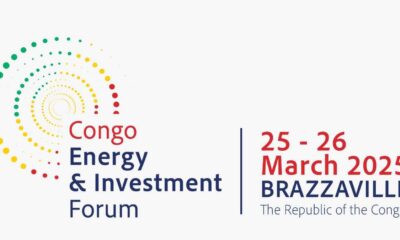

African Energy Chamber (AEC) Endorses Inaugural Congo Energy & Investment Forum, Catalyzing Growth in the Republic of Congo’s Energy Sector
-


Any Successful African Energy Policy at Conference of the Parties (COP) or Anywhere Must Have Oil and Gas at its Core (By NJ Ayuk)
-
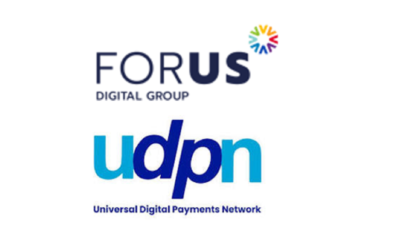

Universal Digital Payments Network (UDPN) and FORUS Digital Announce Strategic Cooperation to Advance Financial Innovation in Africa
-


OPPO Find X8 and Find X8 Pro Launches Globally with Ultra-Grade Hasselblad Cameras, Next-Gen Performance and ColorOS 15
-


OPPO Launches Find X8 Series Globally, Marking Steady Progress in Globalization
-


OPPO Elevates ColorOS 15 with Microsoft’s Advanced AI Productivity Features
Business
African Energy Chamber (AEC) Endorses Inaugural Congo Energy & Investment Forum, Catalyzing Growth in the Republic of Congo’s Energy Sector
Published
2 hours agoon
November 22, 2024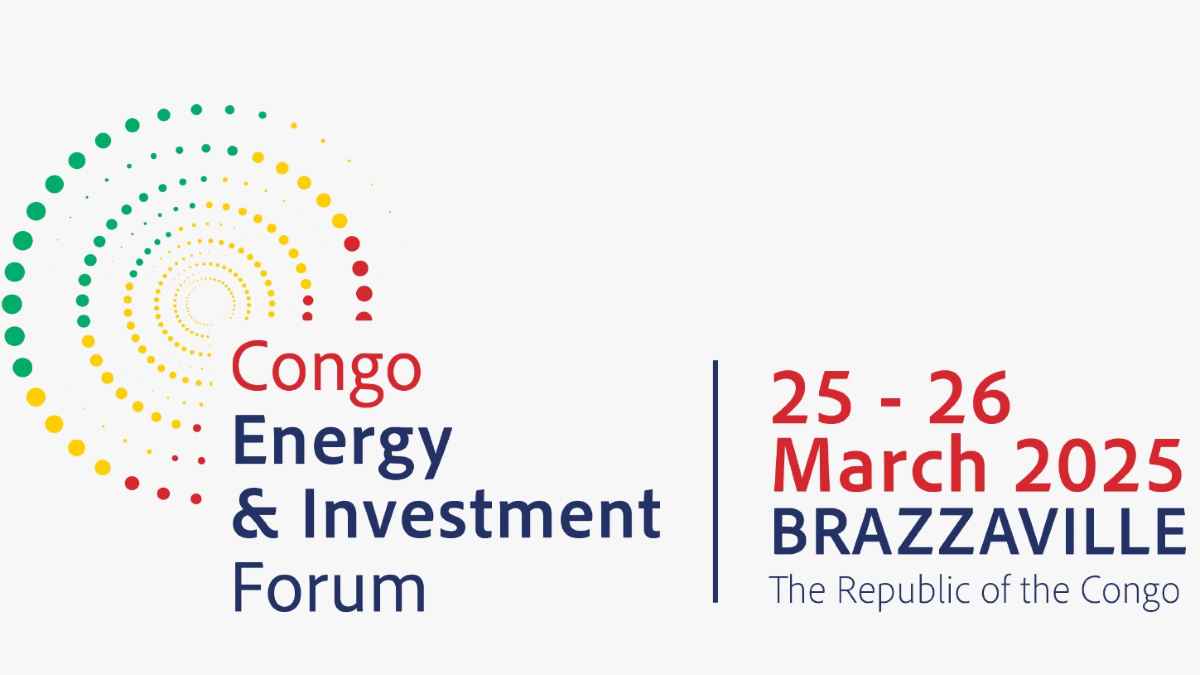
The African Energy Chamber proudly supports the inaugural Congo Energy & Investment Forum, scheduled for March 25-26, 2025 in Brazzaville
BRAZZAVILLE, Republic of the Congo, November 21, 2024/APO Group/ —
The African Energy Chamber (AEC), as the voice of Africa’s energy sector, proudly supports the inaugural Congo Energy & Investment Forum (CEIF), set to take place in Brazzaville on March 25-26, 2025. Unveiled during African Energy Week: Invest in African Energies in Cape Town by the Republic of Congo’s Ministry of Hydrocarbons, this milestone event signals the nation’s commitment to strengthening its role as a key energy player on the continent, while showcasing a range of investment opportunities.
Under the leadership of Hydrocarbons Minister Bruno Jean-Richard Itoua, the Republic of Congo has emerged as sub-Saharan Africa’s fourth-largest oil producer, with anticipated production of 280,000 barrels per day (BPD) by the end of 2024 and ambitions to reach 500,000 BPD within three to five years. Building on this momentum, the CEIF will highlight innovative projects and foster strategic partnerships that enhance investment, drive economic growth and position the Congo as a leader in Africa’s energy expansion.
Meanwhile, Société Nationale des Pétroles du Congo (SNPC), led by CEO Maixent Raoul Ominga, is spearheading the Congo’s energy growth. SNPC holds a majority stake in the Mengo Kundji Bindi II permit, with 2.5 billion barrels of estimated oil potential. The company is developing the site through 13 wells, 3D seismic data acquisition, and the construction of six production platforms.
We are honored to secure the Chamber’s endorsement for this pivotal forum
With the Chamber’s official support, the CEIF is set to attract government leaders, C-suite executives from major IOCs and energy experts, who will offer critical insights into Congo’s oil, gas and energy sector developments. The country is overhauling its gas sector to unlock 10 trillion cubic feet of resources through a comprehensive Gas Master Plan and new Gas Code that introduces favorable fiscal terms and enables small-scale project development, as well as large-scale, integrated gas megaprojects like Eni’s Congo LNG and Wing Wah’s Bango Kayo.
“The Congo Energy & Investment Forum marks a major milestone for the country, amplifying its strategic energy initiatives and showing industry stakeholders that it is serious about advancing its energy sector. We look forward to supporting this forum, which promises to connect investors, drive impactful partnerships and elevate the Congo’s position within Africa’s energy sector,” says NJ Ayuk, Executive Chairman of the AEC.
“We are honored to secure the Chamber’s endorsement for this pivotal forum, which, through its vast network and influence, will help attract key stakeholders and decision-makers to the event. Together, we aim to highlight the immense potential of the Congo’s energy sector, foster strategic partnerships and drive transformative investments that contribute to sustainable growth across the industry,” notes James Chester, CEO of Energy Capital & Power, organizers of the CEIF.
This premier forum provides a unique platform for connecting local and international investors with high-impact opportunities across a diversified range of energy projects, paving the way for collaborations that drive growth and transformation. The AEC’s endorsement underscores its commitment to fostering strategic partnerships, sustainable investment and regional cooperation, aligning with its broader mission to make energy poverty history across the continent by 2030.
As the energy industry continues to serve as a critical pillar of the Congolese economy and a catalyst for sustainable development, the AEC remains dedicated to supporting initiatives like CEIF that foster progress, investment and partnerships across the African energy landscape.
For more information, please visit www.CongoEnergyInvestment.com.
Distributed by APO Group on behalf of Energy Capital & Power.
Business
Any Successful African Energy Policy at Conference of the Parties (COP) or Anywhere Must Have Oil and Gas at its Core (By NJ Ayuk)
Published
2 hours agoon
November 22, 2024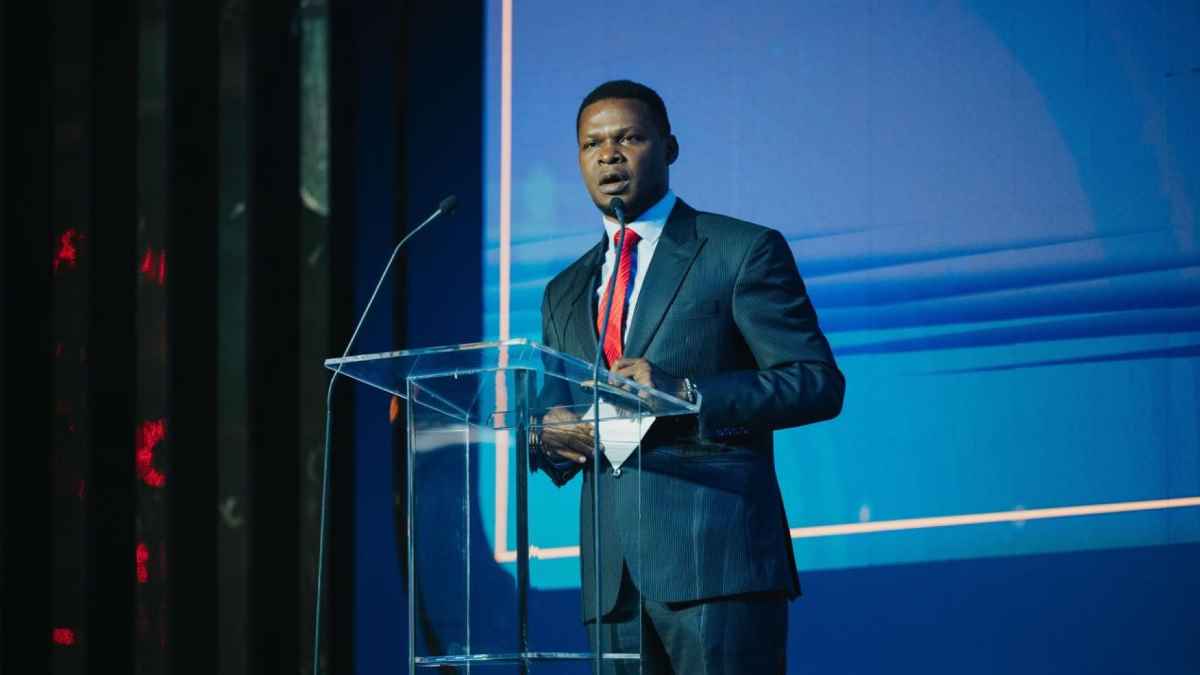
Africa will need global financial systems, including multilateral development banks, to play a significant role in financing our energy growth which must include fossil fuels
Egalement disponible en Français
JOHANNESBURG, South Africa, November 21, 2024/APO Group/ —
By NJ Ayuk, Executive Chairman of the African Energy Chamber (www.EnergyChamber.org).
I believe the ultimate responsibility for getting there is ours and no one else’s. Yes, we need partners to walk alongside us, but the success of our energy movement rests on African shoulders.
To begin with, I would love to see African energy stakeholders speaking in a unified voice about African energy industry goals.
This will be particularly important in COP29 in Baku. It is imperative that African leaders present a unified voice and strategy for African energy transitions. We must make Africa’s unique needs and circumstances clear and explain the critical role that oil and gas will play in helping Africa achieve net-zero emissions in coming decades.
I would encourage African leaders to talk about the need for financing, as well, to make it possible for us to adopt renewable energy sources and set up the necessary infrastructure. Africa will need global financial systems, including multilateral development banks, to play a significant role in financing our energy growth which must include fossil fuels.
Africa’s governments have a role to play in a successful African energy movement as well.
Because Africa’s energy industry still can benefit greatly from the presence of international oil companies, our government leaders need to approve contracts with oil and gas companies promptly instead of allowing red tape to delay projects after discoveries are made.
And, they need to offer the kinds of fiscal policies that allow oil companies to operate profitably in Africa. In turn, that will help those companies generate revenue, create jobs and business opportunities, and foster capacity building.
I also would encourage governments and civil societies to reward companies that exemplify positive behavior. Let’s incentivize the kind of activities we want, from creating good jobs and training opportunities to sharing knowledge.
I would love to see African energy stakeholders speaking in a unified voice about African energy industry goals
And there’s more.
We in Africa must work together to create more opportunities for women to build careers in the oil and gas industry at all levels. Our energy industry can’t reach its potential to do good when half of our population is left out. Our progress on behalf of women has not been great—We need to do better, and we need to act quickly.
How the world can support
Now, I mean it when I say Africans are responsible for building the future they want. But, I would love to see Western governments, businesses, financial institutions, and organizations support our efforts.
How? They can avoid demonizing the oil and gas industry. We see it constantly, in the media, in policy and investment decisions, and in calls for Africa to leave our fossil fuels in the ground. Actions like these, even as Western leaders have pushed OPEC to produce oil, are not fair, and they’re not helpful.
I also would respectfully ask financial institutions to resume financing for African oil and gas projects and stop attempting to block projects like the East African Crude Oil pipeline or Mozambique’s LNG projects.
Please understand that with the war in Ukraine, the energy crisis in Europe, and the energy poverty facing our continent, our countries, like many others, are simply choosing the paths they believe are most likely to help their people.
You know, people for years have accused me of loving oil and gas companies more than Africa. The opposite is true. In my frequent travels around the continent, I’ve observed far too many young people with little in the way of opportunities.
I know our young people have aspirations for a better future. I know they have big dreams. And, I know that future is nearly within their grasp.
A thriving, strategically managed energy industry can make it possible for many of these young people, whether it leads to good jobs or it fosters the kind of economic growth that creates jobs in other fields. Even if we only get the lights on in their communities, we’ll be giving our young people hope and improving their chances of realizing their goals.
This is what drives me, the idea that with our ongoing efforts and determination, our young people can realize meaningful opportunities. I encourage each of you to work with us at the African Energy Chamber, in a spirit of cooperation and mutual respect. Together, we can build the kind of African energy movement that our continent, our communities, and our young people need and deserve.
Distributed by APO Group on behalf of African Energy Chamber.
Business
Universal Digital Payments Network (UDPN) and FORUS Digital Announce Strategic Cooperation to Advance Financial Innovation in Africa
Published
2 hours agoon
November 22, 2024
This partnership is set to empower African communities, governments, and businesses, and represents a significant step toward realising the shared goal of financial inclusion and economic advancement across Africa
CAPE TOWN, South Africa, November 21, 2024/APO Group/ —
In Sub-Saharan Africa, approximately 105 million adults are unbanked and lack proper identification documents (http://apo-opa.co/4fZNzyr) [1]. Over 350 million adults in Africa live on a cash-only basis (http://apo-opa.co/3Z2xBg6), without access to financial accounts, credit cards, or lending facilities. Digital currency systems could prove to be key in improving financial inclusion and opening up new opportunities to large underbanked communities in many African countries.
Universal Digital Payments Network (UDPN) (https://apo-opa.co/4g0POSt), the world’s leading global payments messaging network supporting regulated stablecoins and Central Bank Digital Currencies (CBDCs) and FORUS Digital (http://FORUS.Digital), a global leader in blockchain-based cooperative digital finance, are starting a strategic cooperation aimed at expanding financial inclusion and promoting tokenisation efforts across Africa.
This partnership is set to empower African communities, governments, and businesses, and represents a significant step toward realising the shared goal of financial inclusion and economic advancement across Africa, with blockchain and decentralised finance at the forefront of this transformation. UDPN and FORUS Digital will collaborate to introduce the UDPN platform’s capabilities throughout Africa, initially in South Africa, Malawi, Zimbabwe and Ethiopia.
Sonny Fisher (https://apo-opa.co/4fVmRXZ), Founder of FORUS Digital (https://apo-opa.co/3YWJRih), remarked “Our partnership with UDPN accelerates our vision of economic empowerment through decentralised finance. Together, we are equipping Africa with the tools to embrace blockchain-powered tokenisation and drive sustainable development.”
“As we stand on the brink of a digital payments revolution, UDPN’s collaboration with FORUS Digital will play a crucial role in shaping a future where financial services are accessible, efficient, and secure for all Africans. This partnership is a testament to our belief that technology can be a powerful tool for development. By working together, we are paving the way for innovative financial solutions that will enhance economic resilience in African communities,” commented Christopher Ortiz (https://apo-opa.co/3UYIb6M), Member of Group Executive Board – North America, UK and APAC, GFT (https://apo-opa.co/4eBennO).
UDPN is a DLT-underpinned messaging backbone focused on providing interoperability between the fast-growing number of different regulated stablecoins, tokenized deposits, and CBDCs, and seamless connectivity between any business IT system and regulated digital currencies.
Earlier this year the UDPN team launched three solutions designed to reshape the landscape of digital payments and assets in the financial sector:
- Tokenised Deposit/Stablecoin Management System: A production-grade system designed for both commercial banks and regulated stablecoin issuers, streamlining the entire lifecycle of tokenised deposits and stablecoin services – from issuance to operation, including advanced interoperability features.
- Digital Asset Tokenisation System: Provides a robust production-grade platform for financial institutions, such as banks and investment firms, to tokenise real-world assets and manage them within a regulated environment.
- UDPN All-in-One Digital Currency Sandbox: A sandbox, designed to enable both commercial and central banks to learn about the latest digital currency technology, test built-in use cases, and develop their own new custom use cases in a self-control and secure environment that the banks can control and provide permissioned access to other institutions in their ecosystem.
The UDPN aims to drive down payment and foreign exchange costs whilst accelerating the uptake of regulated digital currencies.
Over 130 countries [3] globally are currently investigating, developing, or have already launched CBDCs. On the African continent, South Africa, Nigeria, Eswatini and Ethiopia have taken the lead. FORUS Digital has positioned itself in Africa to help central banks and commercial banks in their journey towards CBDC using the UDPN All-in-One Digital Currency Sandbox.
Statista [4] indicated that the Digital Assets market in Africa is projected to reach a revenue of US$3,115.0m by 2024. It indicates that Africa’s Digital Assets market specifically, the number of users is projected to reach 53.89m users by 2025.
Financial innovation is not limited to central banks. Citigroup’s launch of Citi Token Services and Societé Generale’s December 2023 announcement of their digital currency and asset services and the HSBC Orion platform are the most recent examples of how traditional financial institutions are making digital assets an essential part of their service offerings to their clients.
This partnership between UDPN and FORUS Digital will focus on helping central banks deploy a secure CBDC testing environment for creating use cases and defining new regulations. It will also help commercial banks manage their own tokenised deposit and stablecoin life cycle and integrate into the central bank digital currency testing environment. The programmability of value-added financial services will enable new business models and enhance the efficiency and transparency of cross-border payments.
This partnership is a major milestone in Africa’s digital financial transformation and the introduction of UDPN Solutions there will enable a variety of sectors to access secure, low-cost cross-border payments and tokenised financial products. By providing African governments and financial institutions with blockchain-driven tools, UDPN will support enabling an inclusive, scalable digital payments system for the African continent.
Learn more!
To learn more about the Universal Digital Payment Network (UDPN), please visit www.UDPN.io.
Together, we are equipping Africa with the tools to embrace blockchain-powered tokenisation and drive sustainable development
[1] https://apo-opa.co/4fZNzyr
[2] https://apo-opa.co/3Z2xBg6
[3] Atlantic Council’s CBDC Tracker (https://apo-opa.co/4ggoRKH)
[4] Statista (https://apo-opa.co/4fX9p5N)
Distributed by APO Group on behalf of FORUS Digital.
Trending
-
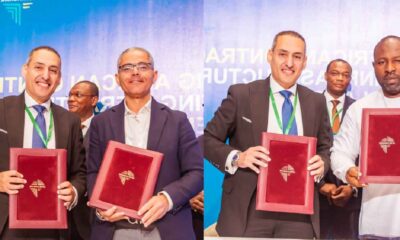
 Business4 days ago
Business4 days agoOver $370 million secured in Engineering, Procurement, and Construction deals at Afreximbank’s Lagos workshop
-
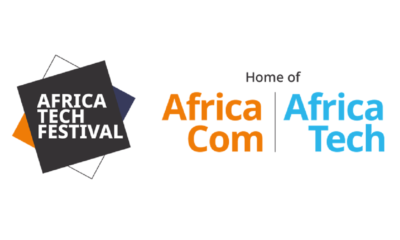
 Business4 days ago
Business4 days agoAfrica Tech Festival 2024 showcases innovation across Africa’s technology ecosystem
-
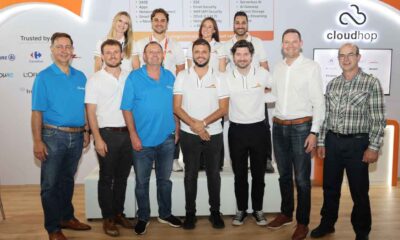
 Business4 days ago
Business4 days agoLiquid C2 builds on strategic partnership with Cloudflare to introduce enhanced cyber security solutions
-

 Business3 days ago
Business3 days agoCanon Central and North Africa Announces Strategic Partnership with École Supérieure des Arts Visuels de Marrakech
-

 Business4 days ago
Business4 days agoJETOUR Joins Hands with DISCOVERY and Cheetah Conservation Fund in Wildlife Conservation, Practicing “Travel as ESG” Philosophy
-
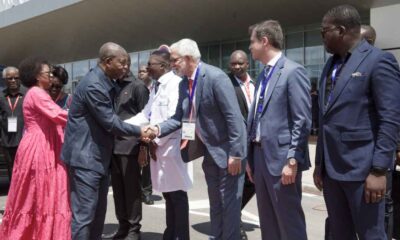
 Business4 days ago
Business4 days agoAngola Marks the Beginning of its 50th Year of Independence with Inauguration of Third World-Class Hospital within a Year, Expanding Healthcare Access Nationwide
-

 Business4 days ago
Business4 days agoJapanese Investment in Africa Finds New Support through Africa Finance Corporation (AFC) and Japan Institute for Overseas Investment (JOI) Partnership
-

 Business4 days ago
Business4 days agoWinners of the 2024 Africa Tech Festival Innovation and Excellence Awards Announced
